The Covid Diaries 71 – Estorick Collection, Italian Threads: MITA Textile Design 1926-1976
A review of a recent visit to the Estorick Collection in Islington, including their exhibition Italian Threads: MITA Textile Design 1926-1976. In which the gallery is small and quick to visit, but it is a nice oasis of calm and culture nonetheless.
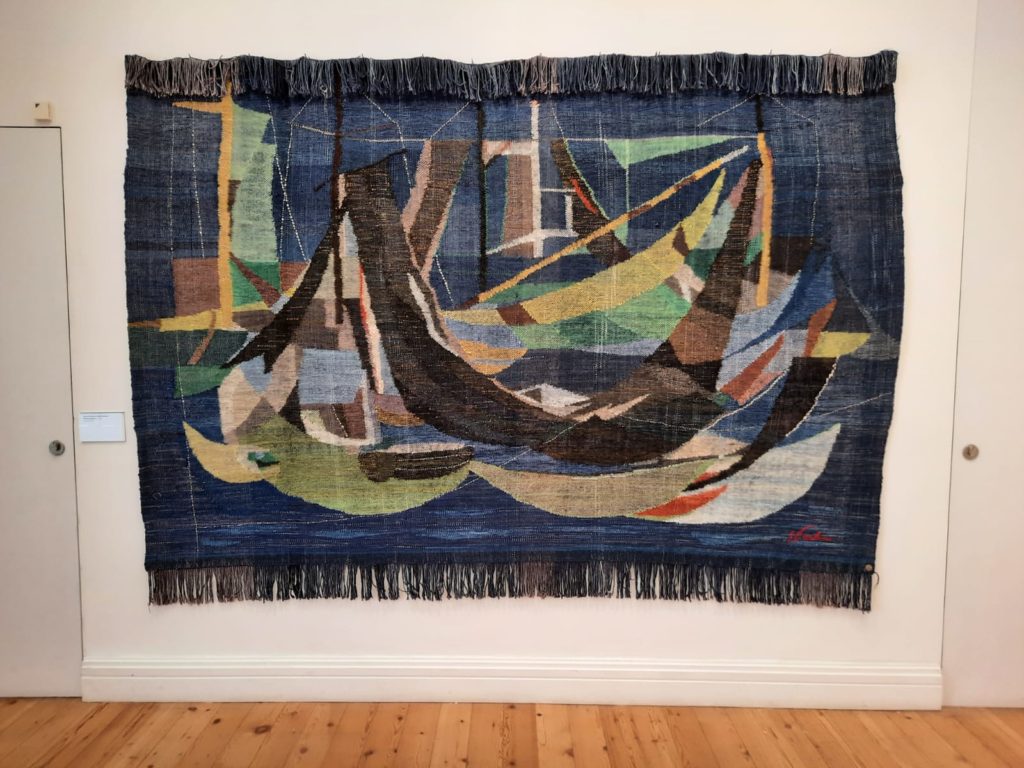
Hello Again Estorick Collection
Today I am going to be telling you about another London cultural institution which I had not visited for quite a while, but who have tempted me back with their temporary exhibition. The Estorick Collection, for those who are not familiar with it, is something of an oddity in the London cultural landscape. It is a collection of Italian modern and futurist art put together by Erick Estorick (an American, founder of the Grosvenor Gallery) and his wife Salome (originally German). It occupies a listed Georgian townhouse near Highbury Corner. The result is so unexpected, and yet all the more lovely for it.
Eric and Salome met on an ocean liner in 1947. On their honeymoon in Switzerland, Eric discovered the work of Boccioni and the Italian futurists. The Estoricks began amassing modern Italian art and by the late 1950s were displaying their collection in major exhibitions. They loaned the collection to the Tate for a time, but eventually established the Eric and Salome Estorick Foundation for its ongoing care. The Estorick Collection opened to the public in 1998.
The building it occupies, Northampton Lodge, also has an interesting history. It dates to 1807-1810 and was built on land belonging to the Ninth Earl of Northampton, hence Northampton Lodge. It was a private home until 1916, then variously an artificial flower factory; architect’s offices; IT company; before the Eric and Salome Estorick Foundation bought and renovated it. Today there are temporary exhibition galleries downstairs, and the permanent collection has a deliberately more domestic feel in the upstairs rooms. There is also a lovely cafe in the garden, so it is a nice spot to spend some time. London actually does these restored historic buildings quite well – see also the William Morris Gallery in Walthamstow.
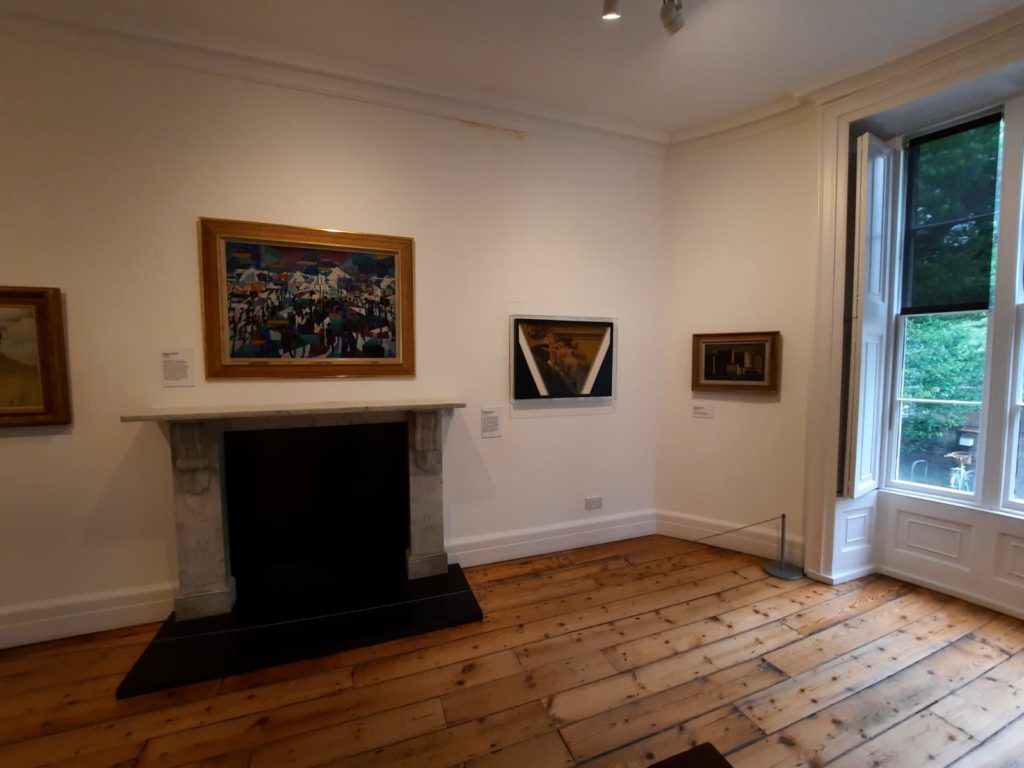

Italian Threads: MITA Textile Design 1926-1976
And now on to the main event. It was this exhibition that tempted me back to the Estorick after a few years’ gap. MITA (Manifattura Italiana Tappeti Artistici – Italian Artistic Rug Manufacturer) was founded in 1926 in Genoa by Mario Alberto Ponis. He was an astute businessman with a vision for his company’s niche early on. MITA would produce hand-knotted rugs with technical innovations to speed up production, ensuring high quality at affordable prices, with a range of traditional and modern designs. MITA also went on to produce fabrics; briefly uniforms as well during WWII; and in the post-war period collaborated with shipping lines to kit out their boats in glamorous Italian mid-century style.
The exhibition at the Estorick Collection is small but nicely formed, much like the Estorick itself. There is a good range of materials on display – tapestries and rugs, fabrics, designs and archival materials, scarves, etc. And the information is illuminating without being overwhelming. Mostly it is nice simply to wander around and admire the designs and the technical skill. I particularly enjoyed learning more about how a tapestry or rug design goes from sketch to plan to finished product.
The MITA exhibition was plagued by lockdowns – delayed, shut down, reopened, extended, so it felt like a real accomplishment to finally get along and see it. If you can, why not come along, admire the exhibition, and then relax with a nice coffee in the garden? Perfect!

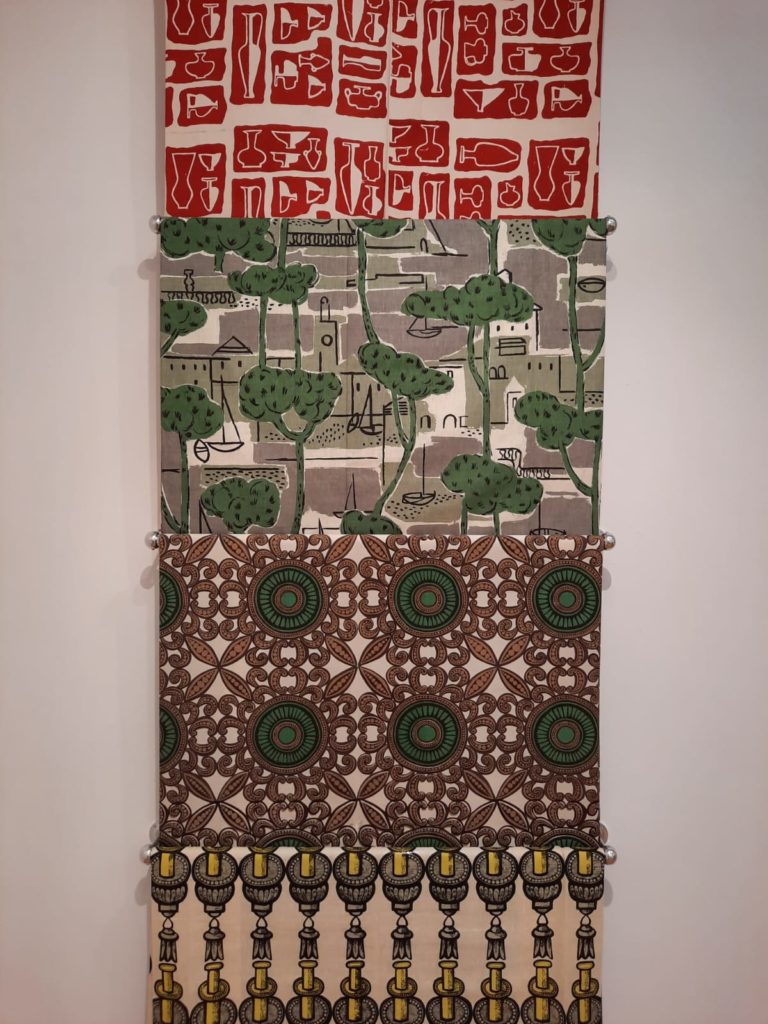
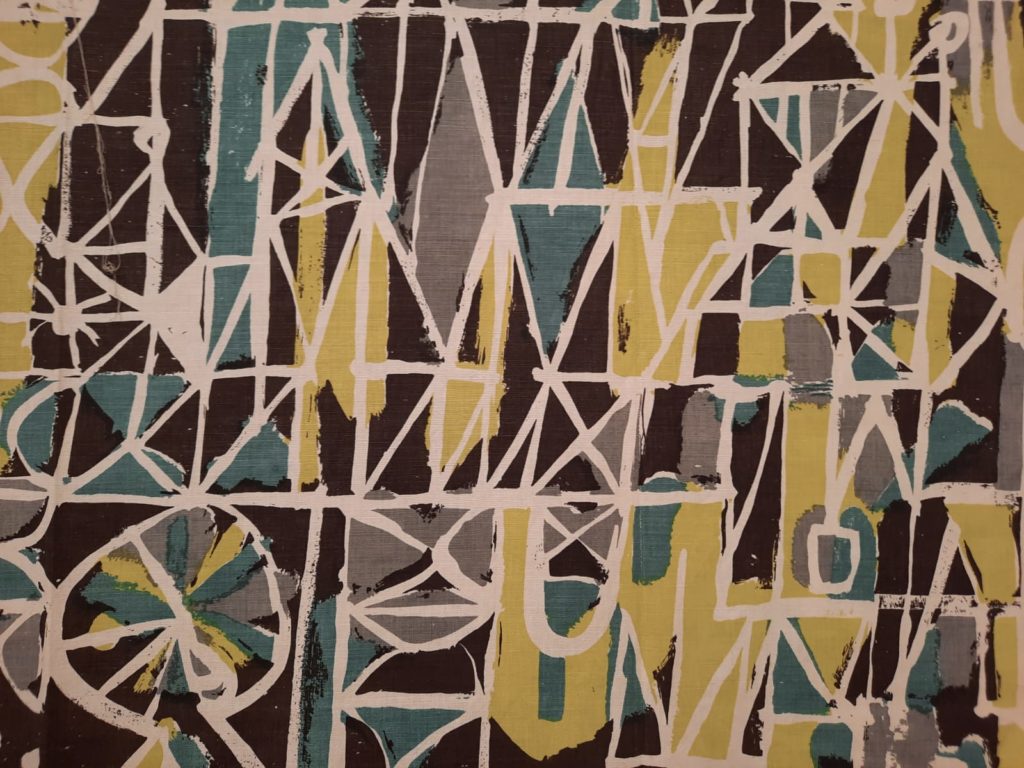
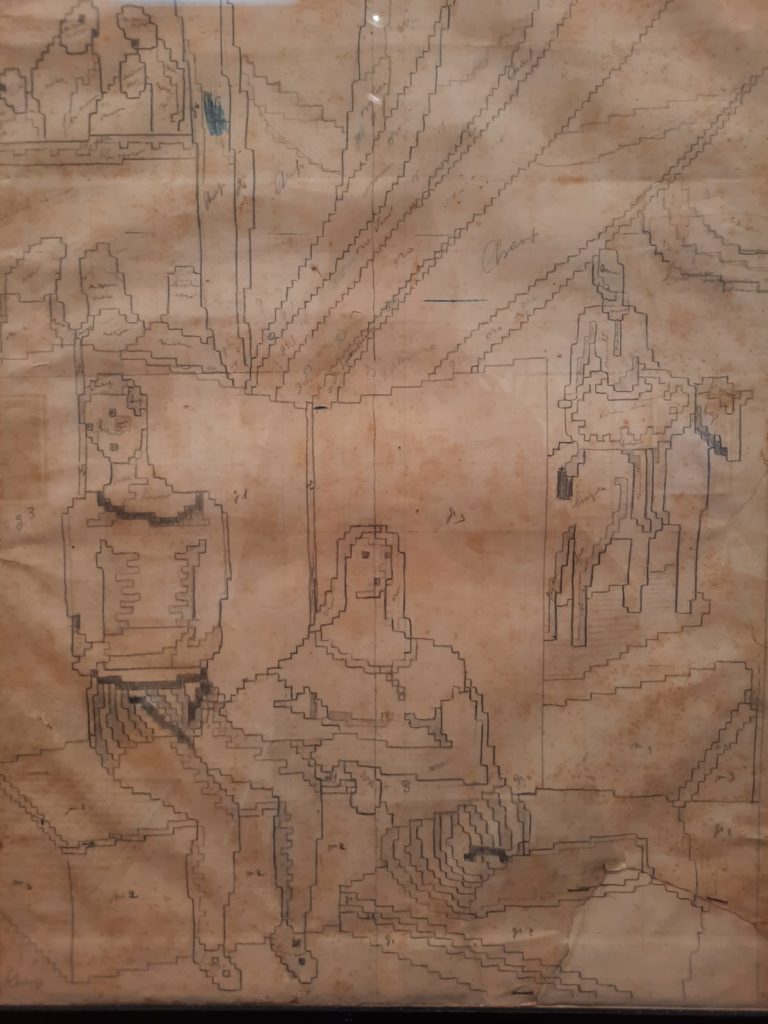
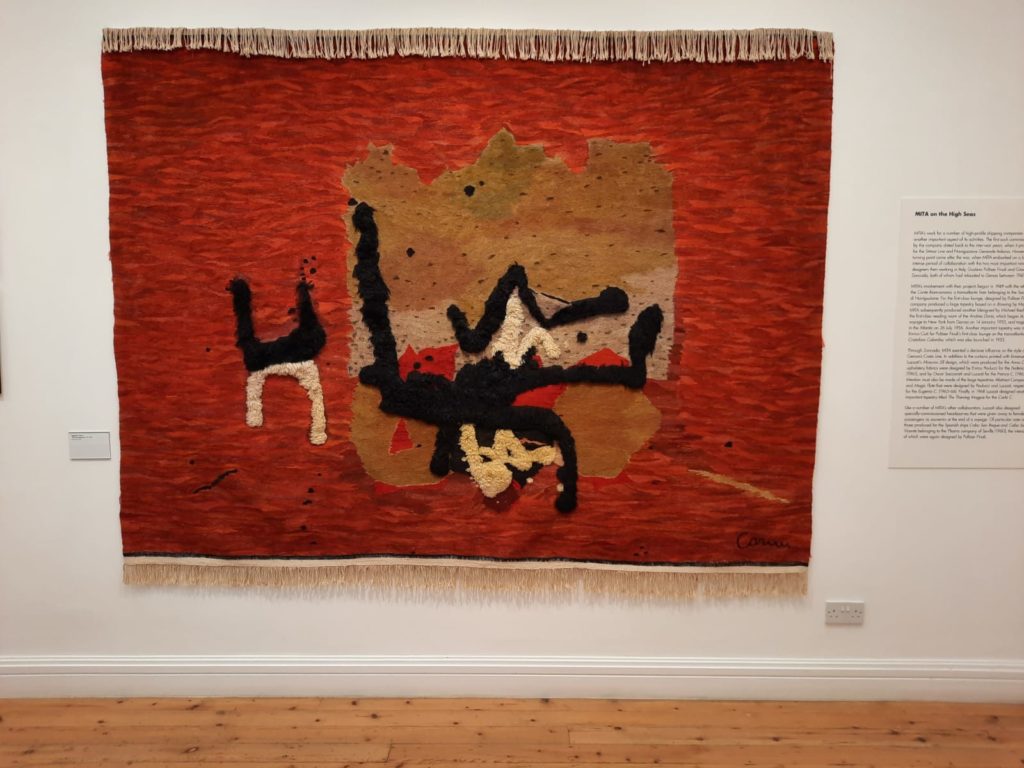
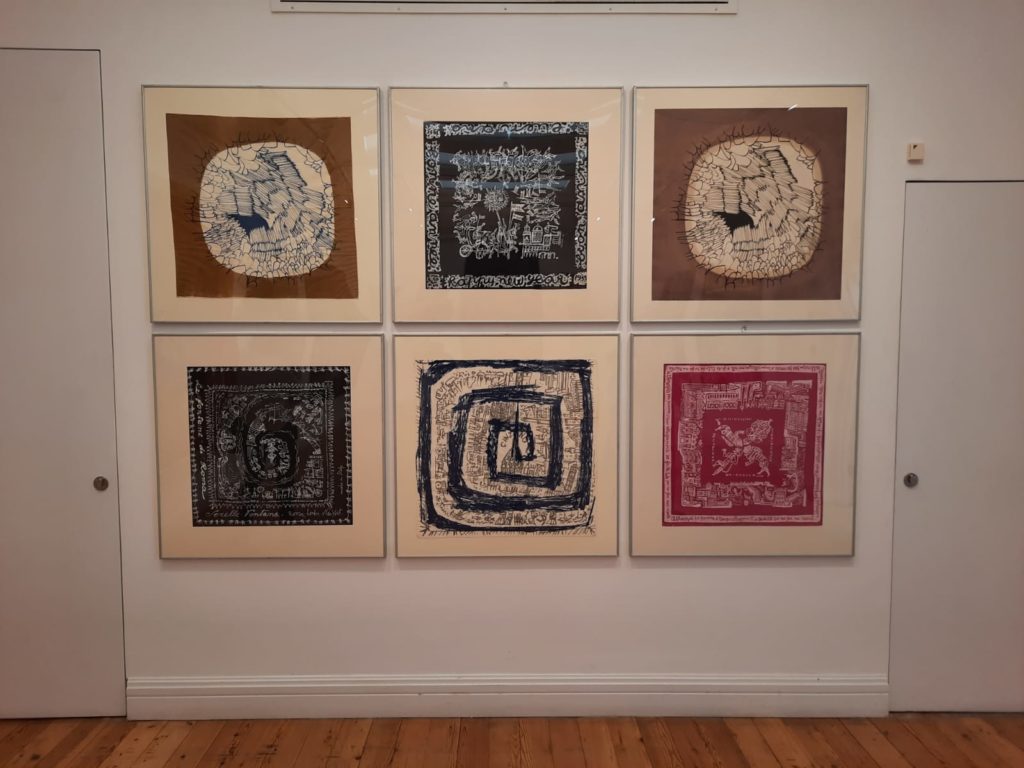
On its own merits: 3/5
Italian Threads: 3/5
Implementing Covid rules: 3.5/5
Italian Threads: MITA Textile Design 1926-1976 on until 20 June 2021
Find out what other exhibitions are on in London. Sign up below for our weekly newsletter:
If you see this after your page is loaded completely, leafletJS files are missing.

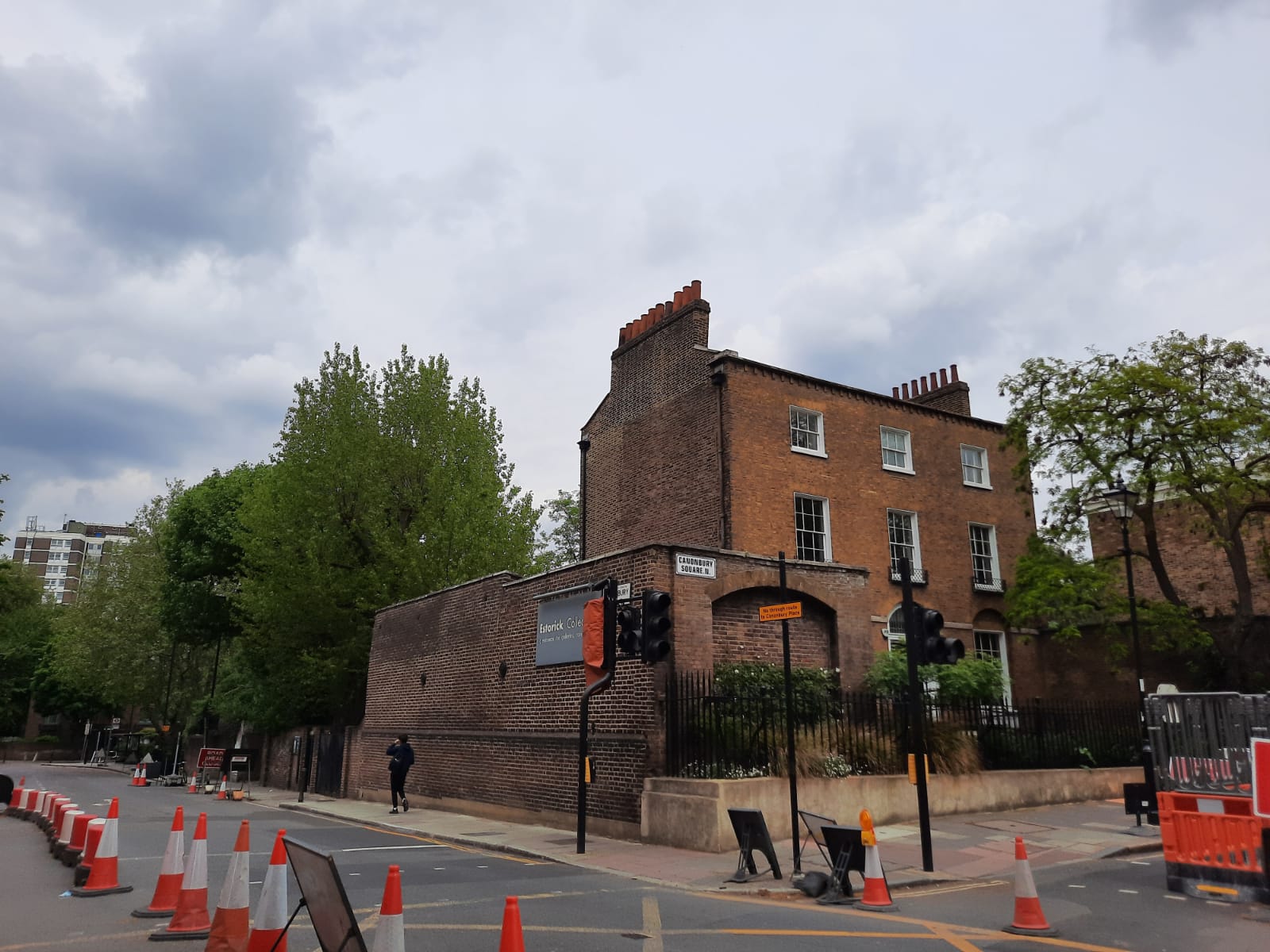
2 thoughts on “The Covid Diaries 71 – Estorick Collection, Italian Threads: MITA Textile Design 1926-1976”